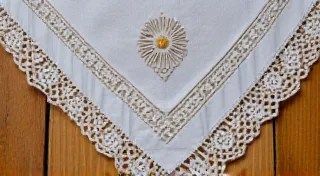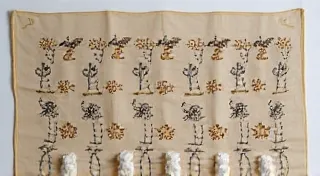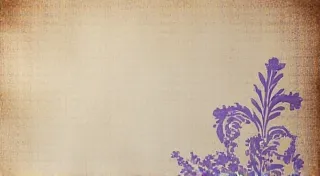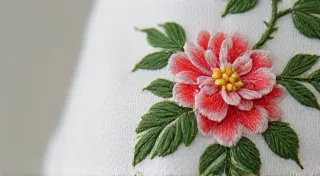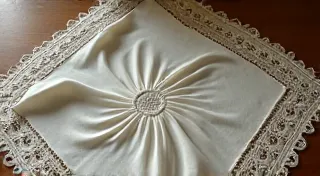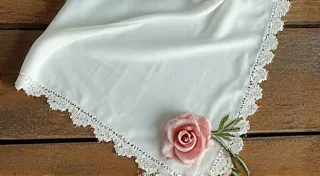Understanding Antique Lace Techniques: Meanders, Filet, and More
Antique handkerchiefs are often treasured not just for their historical significance, but also for the exquisite lace detailing that adorns them. Understanding the different lace techniques used in their creation provides a deeper appreciation for the craftsmanship and artistry involved. This article explores some of the common lace styles found on antique handkerchiefs, focusing on techniques like meanders and filet lace.
A Brief History of Lace & Handkerchiefs
Lace, as we know it, evolved over centuries. Originally produced as a luxury for royalty and the wealthy, the techniques gradually became more accessible, leading to wider use in everyday items like handkerchiefs. The beauty of antique handkerchiefs lies not only in their purpose—a functional item—but also in the artistry and time invested in the lace embellishment. Beyond the lace itself, the personal touch often added to these linens through hand embroidery was incredibly significant. For those interested in understanding the personal stories held within antique handkerchiefs, a closer look at handkerchief monograms can reveal fascinating details about the original owners.
Meander Lace: The Intertwined Beauty
Meander lace, also known as Spanish lace or Corded Lace, is characterized by its raised, corded patterns against a ground mesh. The cords are created by twisting and securing threads, giving the lace a three-dimensional texture and a distinctive, flowing design. The patterns often resemble winding rivers or meandering paths, hence the name. Antique handkerchiefs with meander lace are prized for their intricate beauty and the considerable skill required to produce them. The corded appearance distinguishes it clearly from simpler ground laces. The intricacies of these techniques often involved specific tools and practices that were passed down through generations, adding to the value and historical significance of these textiles.
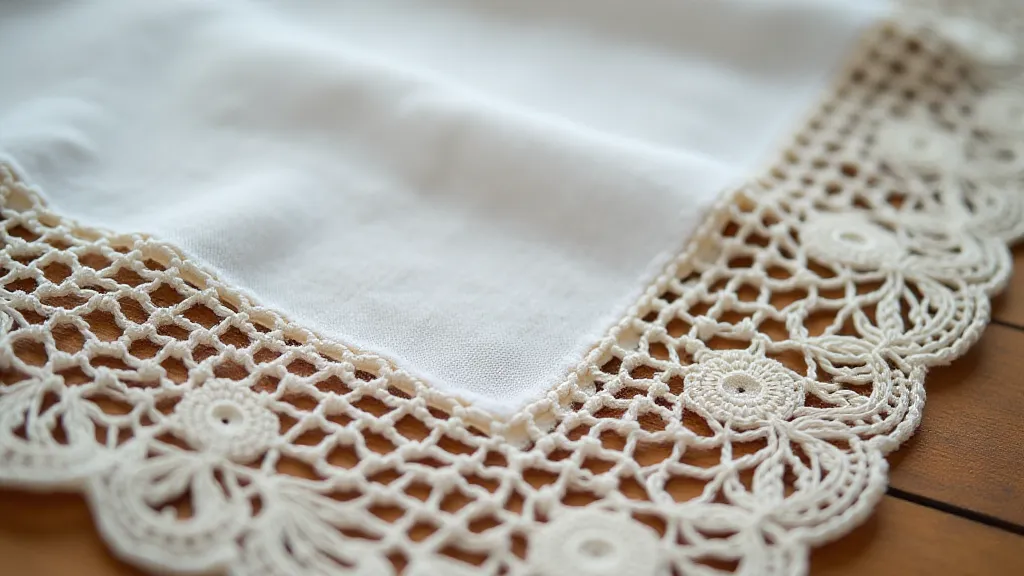
Filet Lace: The Net-like Elegance
Filet lace, or net lace, is another frequently encountered style. It’s created by making a square mesh (the "filet") and then using a needle to embroider patterns onto the net. The patterns are usually filled in with a denser stitch, contrasting with the open mesh of the base. Filet lace often features floral motifs, geometric designs, or even pictorial scenes. What makes it unique is the combination of the net ground with applied embroidery. The patterns chosen for filet lace were often symbolic, carrying subtle messages or representing specific sentiments. If you're curious about the meanings behind the flowers often depicted, exploring the symbolism of flowers on antique handkerchiefs can add another layer of appreciation.

Distinguishing Other Lace Types
While meander and filet lace are common, you'll also encounter other styles on antique handkerchiefs, including:
- Venice Lace: Known for its elaborate floral designs and raised edges, often machine-made in later examples but originally handmade.
- Needle Lace: Created entirely by hand using a needle and thread to create intricate patterns. These are particularly delicate and valuable.
- Bobbin Lace: Made using bobbins to intertwine threads. This produces a denser, more structured lace compared to needle lace.
Identifying Lace on Antique Handkerchiefs
Identifying the specific lace technique can be challenging, but careful observation is key. Consider these factors:
- Texture: Is the lace raised and corded (meander)? Or flat and net-like (filet)?
- Construction: Is it made entirely by hand? Or is there evidence of machine production?
- Pattern: What motifs are present? Are they simple or elaborate?
- Overall Condition: Aging and wear can obscure the original details, but they also add to the handkerchief's character.
The Silent Language of Embroidery and Lace
Beyond the technical aspects of lace making, it's important to consider the broader cultural context in which these handkerchiefs were created. During the Victorian era, for example, needlework and lace making were not merely crafts; they were forms of communication. Young women were often taught these skills as part of their education, and the resulting creations were frequently used to convey messages of love, friendship, or remembrance. The intricate details and symbolic motifs used in these pieces often held hidden meanings, adding another layer of complexity to their interpretation. Furthermore, it’s intriguing to consider how these skilled artisans subtly conveyed stories and emotions through their work, revealing a glimpse into a bygone era of unspoken sentiments.
Preserving Your Antique Linens
Antique handkerchiefs are delicate treasures. Proper storage and handling are crucial for preserving their beauty. Store them flat, away from direct sunlight and moisture, and handle them with clean hands. Avoid harsh detergents when cleaning, and consider consulting a professional linen conservator for more extensive restoration. Learning how to properly care for your collection is essential to enjoying it for years to come; you can find additional tips and advice on how to care for your antique handkerchief collection.
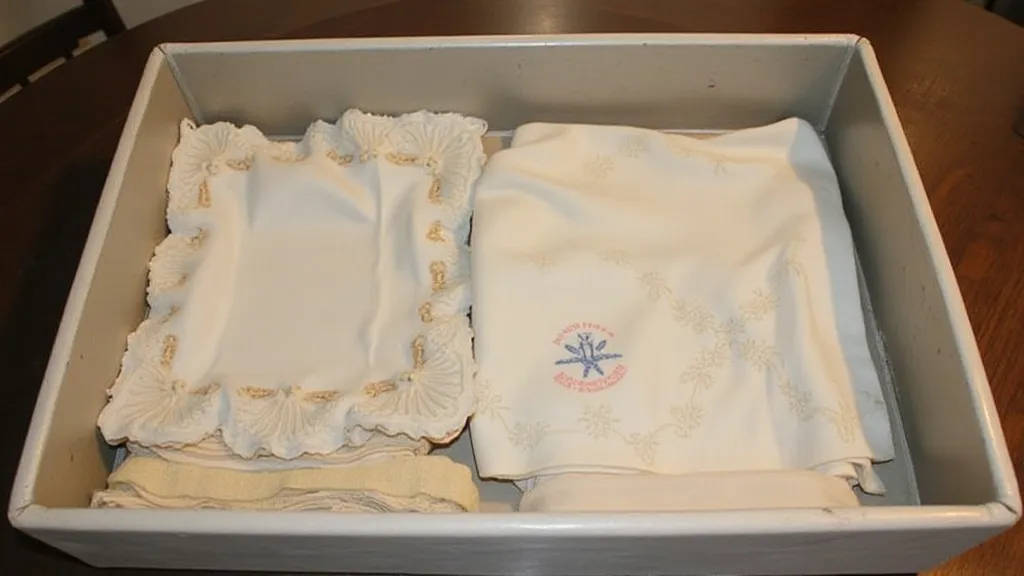
The Art of Hand Embroidery: A Deeper Dive
While lace provides a beautiful framework, many antique handkerchiefs also feature intricate hand embroidery. This added dimension often elevates the piece from a simple functional item to a cherished heirloom. The stitches used, the colors chosen, and the motifs depicted all contribute to the overall message conveyed by the handkerchief. Sometimes the embroidery complements the lace pattern, while other times it creates a contrasting visual effect. Understanding the different embroidery techniques—such as satin stitch, stem stitch, and French knots—can help you appreciate the skill and artistry involved in creating these delicate treasures. The evolution of embroidery techniques over time also offers valuable clues about the handkerchief's age and origin. The skill involved in both the lacework and the hand embroidery often reveals a story of dedication and artistry that transcends the mere object itself.
Decoding the Era: Connecting Handkerchiefs to History
Antique handkerchiefs aren't just beautiful objects; they are tangible links to the past. Each handkerchief carries its own unique history, offering glimpses into the lives of those who owned and used them. The style of the lace, the motifs depicted, and the materials used can all provide clues about the handkerchief’s age and origin. During the Regency era, for example, handkerchiefs were often given as tokens of affection or exchanged as part of courtship rituals. Later, during the Victorian era, they became increasingly elaborate and were often used as part of formal attire. Examining these details can help you piece together a more complete picture of the handkerchief’s historical context. Consider that the very act of creating these delicate items spoke volumes about the social norms and values of the time.
By understanding the various lace techniques used in antique handkerchiefs, you can gain a deeper appreciation for these beautiful and historical objects. Happy collecting!
